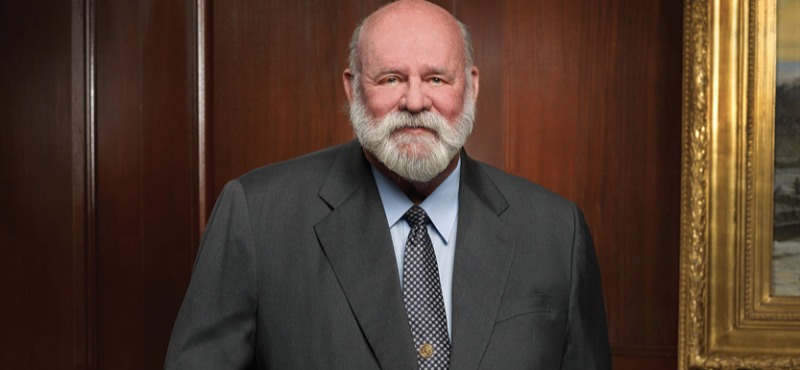Under Louisiana law, a motorist who rear-ends another vehicle is presumed to be at fault based on interpretations of La. R.S. 32:81(A). This presumption can be overcome, or rebutted, by evidence that the preceding vehicle operator, or someone else, was at fault. But what if you question whether the rear-ending motorist actually “rear-ended” the vehicle in front of it? Does a court automatically presume that the vehicle in the rear was at fault under the legal presumption?
The answer is “No,” according to the Louisiana Fifth Circuit Court of Appeal in its recent decision in Smith v. Charles Murret, 21-CA-662 (La. App. 5 Cir. 08/03/2022).[1]
FACTS OF THE CASE AND CONFLICTING TESTIMONY
In this car accident case, the Plaintiff, Ms. Smith, filed a lawsuit claiming that a Mr. Murret was at fault for her claimed injuries because Mr. Murret rear-ended her. Smith stated she was stopping for traffic while in the far-left lane of Veterans Boulevard in Jefferson Parish, a heavily trafficked area. As she stopped, she claimed Murret ran into her from the rear. Murret and his insurer filed an Answer, denying liability and claiming that Smith, indeed, backed into the front of his vehicle.
The matter proceeded to a judge trial before the Hon. Paul A. Bonin[2] in First Parish Court (the equivalent of a small claims court). Smith testified that she stopped to allow a truck to merge into her lane and that she was stopped for a minute or two before being hit from behind, her testimony indicating a relatively minor collision. She informed Murret he had rear-ended her, but he claimed she backed into him.
On the other hand, Murret testified that Smith began to back up, as if she wanted to change lanes. He honked his horn, but she did not stop until front-ending his bumper. He claimed Smith jumped out of her car, accusing him of striking her vehicle. He replied that he was stopped and could not have rear-ended her.
Judge Bonin rendered judgment in favors of the Defendants. In reasons for judgment, the Court stated that Murret’s statements remained consistent, whereas Smith’s statements at trial, in discovery, and to treating providers were inconsistent, both on liability and injuries. Therefore, the Court was “unconvinced that Mr. Murret’s truck rear-ended Ms. Smith’s car.” Ms. Smith filed for appeal.
FINDINGS ON APPEAL
As grounds for error, Smith argued that the trial Court disregarded evidence of how the accident occurred and failed to apply Louisiana’s presumption on rear-end accidents. Essentially, she claimed that the disputed facts did not negate the presumption that Murret, as the rear-ending motorist, should be liable. Defendants, in responding, contended that the rear-ending motorist presumption did not apply because a rear-end collision did not occur. With the Court making credibility determinations as to how the accident occurred (rear versus front-end), and with the finding that Smith backed into Murret, the presumption was not applicable.
The Court of appeal noted that great deference must be given to the findings of fact and credibility determinations of the fact finder, and only when those findings are manifestly erroneous should they be overturned. “Where two permissible views of evidence exist, the factfinder’s choice between them cannot be manifestly erroneous.” Citing Henderson v. Nissan Motor Corporation, 03-606 (La. 02/06/2004), 869 So.2d 62, 69. Based on the conflicting testimony in this case, the Court of Appeal found that the trial court was within its proper discretion of believing Murret over Smith. There was no manifest error.
Under these circumstances, the Court of Appeal ruled that Smith’s reliance on the rear-ending motorist presumption was misplaced. The Court stated:
In order for the presumption to apply, the following motorist must strike the preceding motorist’s vehicle….The trial court stated that it was unconvinced that Mr. Murret’s truck struck the rear of Ms. Smith’s vehicle. Because the trial court did not find that Mr. Murret’s truck struck the rear of Ms. Smith’s vehicle, the following motorist presumption does not apply in this case.
THE LESSON
This confirms that the rear-ending motorist presumption is a presumption of liability and not one of fact. Simply because one vehicle is behind or in front of another does not mean the vehicle in the rear is presumed to be at fault. The finder of fact must first find whether or not the accident constituted a “rear-end” collision. The vehicle in the rear must be the one to strike the vehicle preceding it. We do not automatically presume that the vehicle in the rear struck the vehicle in front of it.
Only if it is established that the following vehicle struck the preceding vehicle will the presumption on liability go into effect. If the fact finder believes that a rear-end collision occurred, then the fact finder must presume liability on the part of the rear vehicle unlessthat liability is rebutted by other facts. If the fact finder does not believe the following vehicle struck the preceding vehicle in the rear, as in this case, then there is no presumption. The Plaintiff claiming to be rear-ended must first prove that, indeed, the other vehicle struck the Plaintiff from behind. Only then does the Plaintiff have the benefit of a rebuttable presumption on liability.
[1] Opinion not yet final as of this publication and subject to change.
[2] Judge Bonin, having retired in 2020, was sitting pro tempore at the time of this trial (i.e., he was sitting as a substitute judge for the time being). Judge Bonin has had an interesting career as a jurist, spanning New Orleans Traffic Court, Criminal District Court for Orleans Parish, and the Louisiana Fourth Circuit Court of Appeal.



















